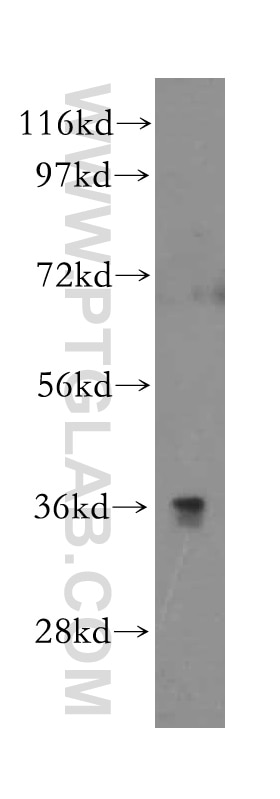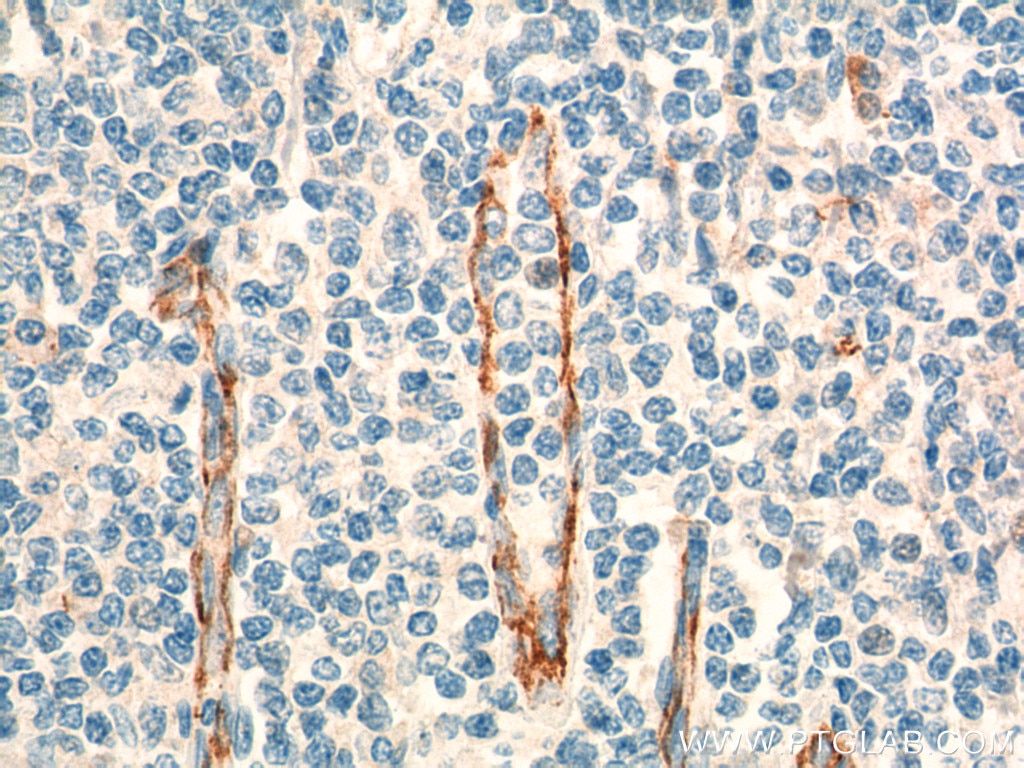CD300LG Polyklonaler Antikörper
CD300LG Polyklonal Antikörper für IF, WB,ELISA
Wirt / Isotyp
Kaninchen / IgG
Getestete Reaktivität
human
Anwendung
WB, IF,ELISA
Konjugation
Unkonjugiert
Kat-Nr. : 15426-1-AP
Synonyme
Galerie der Validierungsdaten
Geprüfte Anwendungen
| Erfolgreiche Detektion in WB | humanes Nierengewebe, HepG2-Zellen |
| Erfolgreiche Detektion in IF | HEK-293-Zellen |
Empfohlene Verdünnung
| Anwendung | Verdünnung |
|---|---|
| Western Blot (WB) | WB : 1:500-1:2000 |
| Immunfluoreszenz (IF) | IF : 1:50-1:500 |
| It is recommended that this reagent should be titrated in each testing system to obtain optimal results. | |
| Sample-dependent, check data in validation data gallery | |
Produktinformation
15426-1-AP bindet in WB, IF,ELISA CD300LG und zeigt Reaktivität mit human
| Getestete Reaktivität | human |
| Wirt / Isotyp | Kaninchen / IgG |
| Klonalität | Polyklonal |
| Typ | Antikörper |
| Immunogen | CD300LG fusion protein Ag8075 |
| Vollständiger Name | CD300 molecule-like family member g |
| Berechnetes Molekulargewicht | 36 kDa |
| Beobachtetes Molekulargewicht | 36 kDa |
| GenBank-Zugangsnummer | BC025395 |
| Gene symbol | CD300LG |
| Gene ID (NCBI) | 146894 |
| Konjugation | Unkonjugiert |
| Form | Liquid |
| Reinigungsmethode | Antigen-Affinitätsreinigung |
| Lagerungspuffer | PBS mit 0.02% Natriumazid und 50% Glycerin pH 7.3. |
| Lagerungsbedingungen | Bei -20°C lagern. Nach dem Versand ein Jahr lang stabil Aliquotieren ist bei -20oC Lagerung nicht notwendig. 20ul Größen enthalten 0,1% BSA. |
Hintergrundinformationen
CD300LG, also known as CLM9 (CMRF35-like molecule 9), is a member of the CD300 protein family. Members of this family are cell surface glycoproteins with a single IgV-like extracellular domain, and are involved in the regulation of immune response. CD300LG is a receptor which may mediate L-selectin-dependent lymphocyte rollings and may play an important role in inflammation.
Protokolle
| Produktspezifische Protokolle | |
|---|---|
| WB protocol for CD300LG antibody 15426-1-AP | Protokoll herunterladen |
| IF protocol for CD300LG antibody 15426-1-AP | Protokoll herunterladen |
| Standard-Protokolle | |
|---|---|
| Klicken Sie hier, um unsere Standardprotokolle anzuzeigen |







